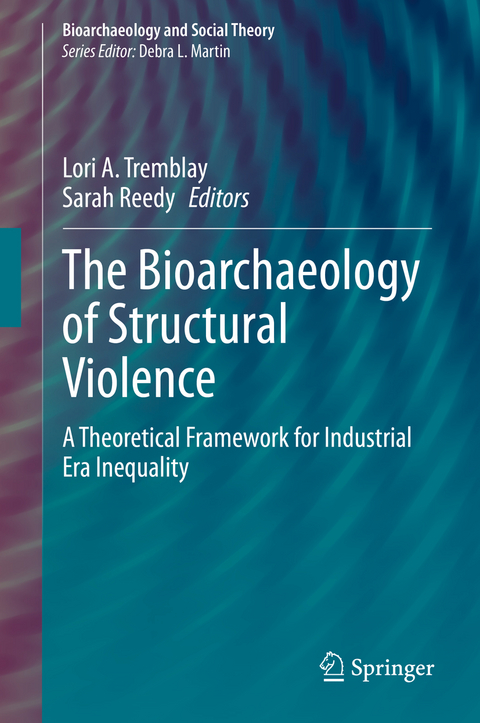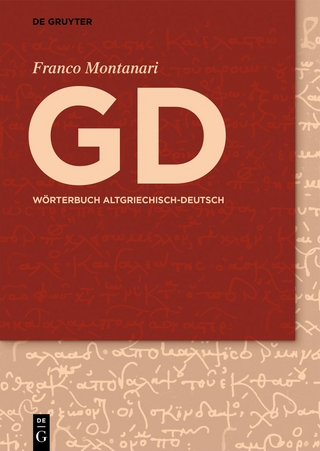
The Bioarchaeology of Structural Violence
Springer International Publishing (Verlag)
978-3-030-46439-4 (ISBN)
This volume is a resource for bioarchaeologists interested in using a structural violence framework to better understand and contextualize the lived experiences of past populations. One of the most important elements of bioarchaeological research is the study of health disparities in past populations.
This book offers an analysis of such work, but with the benefit of an overarching theoretical framework. It examines the theoretical framework used by scholars in cultural and medical anthropology to explore how social, political, and/or socioeconomic structures and institutions create inequalities resulting in health disparities for the most vulnerable or marginalized segments of contemporary populations. It then takes this framework and shows how it can allow researchers in bioarchaeology to interpret such socio-cultural factors through analyzing human skeletal remains of past populations. The book discusses the framework and its applications based on two main themes: the structural violence of gender inequality and the structural violence of social and socioeconomic inequalities.
Lori Tremblay is a bioarchaeologist whose research focuses on structural violence and health care provisioning during the Industrial Era. In her research, she explores how normalized social and socioeconomic structures of oppression and marginalization, as well as identity, may have had an impact on health and risk for stress in impoverished and institutionalized populations from the late 19th- and early 20th-century United States. She also examines health care provisioning and efficacy in Industrial Era institutionalized populations. As part of that branch of her research, she contributed a chapter in New Developments in the Bioarchaeology of Care (Springer 2018) that proposed the use of a population-level approach, included a preliminary model for that approach, and highlighted the challenges inherent in conducting population level analysis of health care provisioning and efficacy in the past. Her use of structural violence as a theoretical framework in her recent research on institutionalized and impoverished populations was the catalyst for the symposium upon which this book is based. She is currently an Assistant Professor of Anthropology at the State University of New York at Delhi. Sarah Reedy is a bioarchaeologist whose research specializes in understanding how the poor environmental conditions of the Industrial Era of Europe impacted the growth and development, morbidity, and mortality patterns of children. The stressed conditions from this period, such as rapid urbanization, malnutrition, inequality, and increased infectious diseases, negatively impacted many within these populations, but especially those that were most vulnerable and marginalized. Children are often an overlooked subset of skeletal populations within the field of bioarchaeology, leaving much information about their lives misunderstood and largely unknown. Sarah's work attempts to analyze variables such as sex, age, and status and their impacts on children's overall growth and developmental patterns. The use of structural violence as a theoretical framework relates to the marginalization of poor and female children via patriarchal practices during the Industrial Era. She is currently a Visiting Assistant Professor at Quinnipiac University, though performed this research as part of her Doctoral Dissertation and while working as a Lecturer at the University of Massachusetts, Amherst.
Chapter 1. Introduction (Lori A. Tremblay And Sarah Reedy).- Part I: The Structural Violence of Gender Inequality.- Chapter 2. Female beauty, bodies, binding, and the bioarchaeology of structural violence in the industrial era through the lens of critical white feminism (Pamela K. Stone).- Chapter 3. Embodied discrimination and "mutilated historicity": Archiving black women's bodies in the Huntington collection (Aja M. Lans).- Chapter 4. Embodying industrialization: Inequality, structural violence, disease, and stress in working class and poor British women (Sarah Mathena-Allen and Molly K. Zuckerman). Chapter 5. Patriarchy in Industrial Era Europe: Skeletal evidence of male preference during growth (Sarah Reedy).- Part II: The Structural Violence of Social and Socioeconomic Inequalities.- Chapter 6. The Erie County Poorhouse (1828-1926) as a Heterotopia: A bioarchaeological perspective (Jennifer L. Muller, Jennifer F. Byrnes, and David A. Ingleman).- Chapter 7. Norway's Industrial Beginnings: New life challenges, recurring poverty, and the path to Tukthuset, Oslo House of Corrections (Gwyn Madden and Rose Drew).- Chapter 8. A new division of labor? Understanding structural violence through occupational stress: An examination of entheseal patterns and osteoarthritis in the Hamann-Todd collection (Anna Paraskevi Alioto).- Chapter 9. Products of industry: Pollution, health, and England's Industrial Revolution (Sara A. McGuire).- Chapter 10. Health, well-being, and structural violence after sociopolitical revolution (Gina M. Agostini).- Chapter 11. Structural violence in antebellum New Orleans: How the interplay of socioeconomic status and law impacted the class structure of Louisiana's port populations (Christine L. Halling and Ryan M. Seidemann).- Chapter 12. Conclusion (Sarah Reedy).
| Erscheinungsdatum | 30.08.2020 |
|---|---|
| Reihe/Serie | Bioarchaeology and Social Theory |
| Zusatzinfo | XIV, 284 p. 51 illus., 26 illus. in color. |
| Verlagsort | Cham |
| Sprache | englisch |
| Maße | 155 x 235 mm |
| Gewicht | 626 g |
| Themenwelt | Geisteswissenschaften ► Archäologie |
| Geisteswissenschaften ► Geschichte ► Allgemeines / Lexika | |
| Geschichte ► Allgemeine Geschichte ► Altertum / Antike | |
| Geschichte ► Teilgebiete der Geschichte ► Kulturgeschichte | |
| Sozialwissenschaften ► Soziologie ► Allgemeines / Lexika | |
| Schlagworte | Archiving Black Women's Bodies • Archiving Black Women’s Bodies • Beauty and bodies in the Victorian Era • bioarchaeology of structural violence in the Victo • bioarchaeology of structural violence in the Victorian Era • Chronic and Episodic Biological Stress in Working • Chronic and Episodic Biological Stress in Working Class Women • Entheseal Stress Patterns as a form of Structural • Entheseal Stress Patterns as a form of Structural Violence • Erie County Poorhouse • Federal Legislation impact Louisiana's Port Popula • Federal Legislation impact Louisiana’s Port Populations • Hamman-Todd Osteological Collection • mutilated historicity • Patriarchy in Industrial Era Europe • Pollution, Health, and England's Industrial Revolu • Pollution, Health, and England’s Industrial Revolution • Skeletal Evidence of Male Preference During Growth • Socioeconomic Status of Louisiana's Port Populatio • Socioeconomic Status of Louisiana’s Port Populations • Structural Violence in Nineteenth Century New Orle • Structural Violence in Nineteenth Century New Orleans • Structural Violence of Gender Inequality • Structural Violence of Social and Socioeconomic In • Structural Violence of Social and Socioeconomic Inequalities • Trauma in Working Class English Women • Tukthuset, Oslo House of Corrections • Workload intensity and health during Portugal's No • Workload intensity and health during Portugal’s Novo regime |
| ISBN-10 | 3-030-46439-3 / 3030464393 |
| ISBN-13 | 978-3-030-46439-4 / 9783030464394 |
| Zustand | Neuware |
| Haben Sie eine Frage zum Produkt? |
aus dem Bereich


